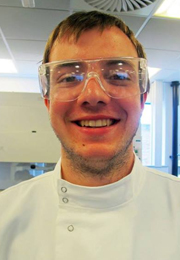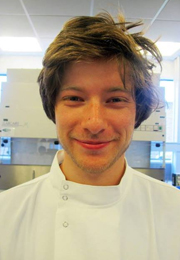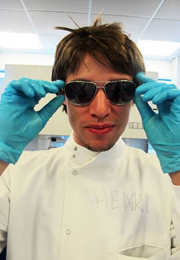Team:Exeter/Modelling
From 2013.igem.org
(Reverting bootstrap theme) |
|||
| Line 1: | Line 1: | ||
| - | + | {{:Team:Exeter/Template/Header}} | |
| - | { | + | |
| - | + | ||
| - | + | ||
| - | + | <div class="container"> | |
| - | + | <div class="row"> | |
| - | + | <div class="span" style="text-align:justify"> | |
| - | + | ||
| - | + | ||
| - | + | ||
| - | + | ||
| - | + | ||
| Line 52: | Line 47: | ||
The majority of our modelling efforts will be focused on creating a system of rules for the protein interaction programming language [http://www.kappalanguage.org/ Kappa]. Using Kappa we will be able to create a [http://en.wikipedia.org/wiki/Stochastic stochastic] model, which will take experimentally determined reaction rates and provide an accurate prediction of the bacteria's reaction to light exposure. | The majority of our modelling efforts will be focused on creating a system of rules for the protein interaction programming language [http://www.kappalanguage.org/ Kappa]. Using Kappa we will be able to create a [http://en.wikipedia.org/wiki/Stochastic stochastic] model, which will take experimentally determined reaction rates and provide an accurate prediction of the bacteria's reaction to light exposure. | ||
| + | |||
| + | </div> | ||
| + | </div> | ||
| + | </div> | ||
| + | {{:Team:Exeter/Template/Footer}} | ||
Revision as of 19:45, 4 September 2013
Contents |
Introduction
We aim to produce an extensive model that predicts the behavior of our system. The purpose of this model is to numerically characterize our bio-bricks for future use.
The model will focus on the rates of the reactions in our pathways and how light interacts with both the sensors and pigments. The final model will predict what colour and tone a bacteria will be given light exposure.
The Team
Physics |
Physics |
Electrical Engineering |
The Model
Assumptions
Due to the complexity of biological systems our model will include but not be limited to the following assumptions:
- Classical elastic mechanics
- Bacteria contain a homogeneous mix of components
- All constituents move with brownian motion
- Bacteria are identical
- Bacteria evenly distributed across surface
- Bacteria do not interact
- Only pathway specific species are rate limiting
The Plan
- The chemistry of our pathways are to be mapped out in detail.
- We will research what relevant models exist and make use of the most accurate.
- We shall construct rudimentary equations for each step in our pathways.
- Throughout the project our model will be updated either in light of experimental results or new ideas.
Modelling Software
The majority of our modelling efforts will be focused on creating a system of rules for the protein interaction programming language Kappa. Using Kappa we will be able to create a stochastic model, which will take experimentally determined reaction rates and provide an accurate prediction of the bacteria's reaction to light exposure.
 "
"







